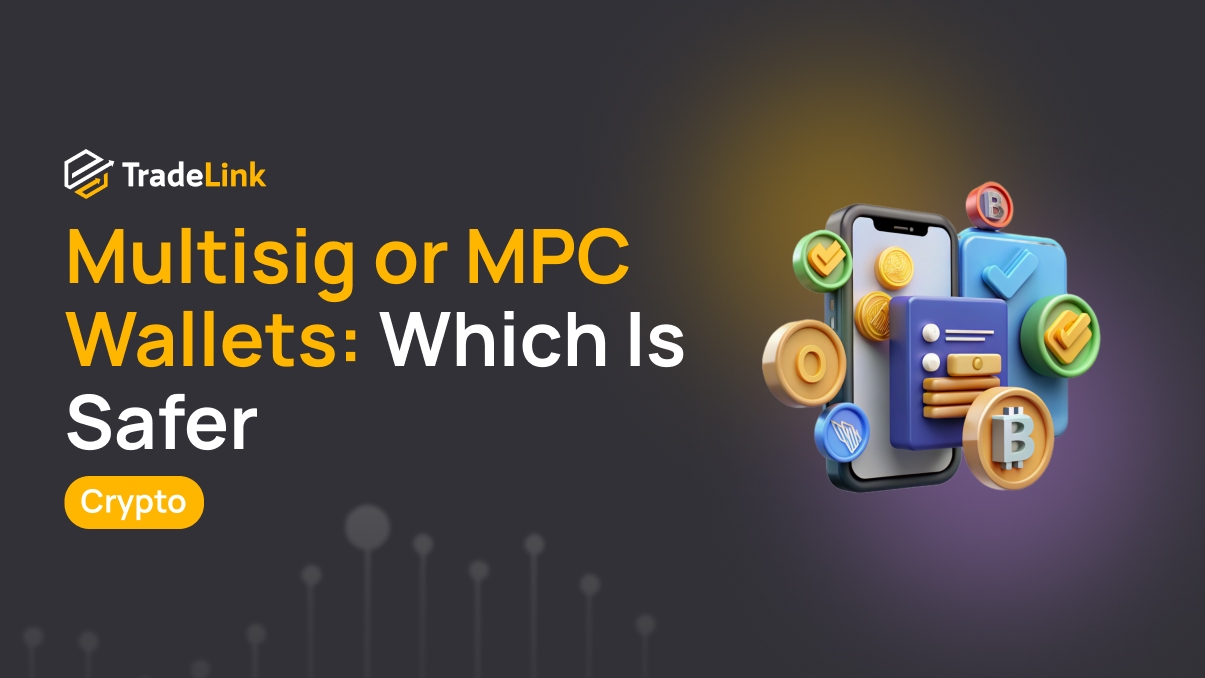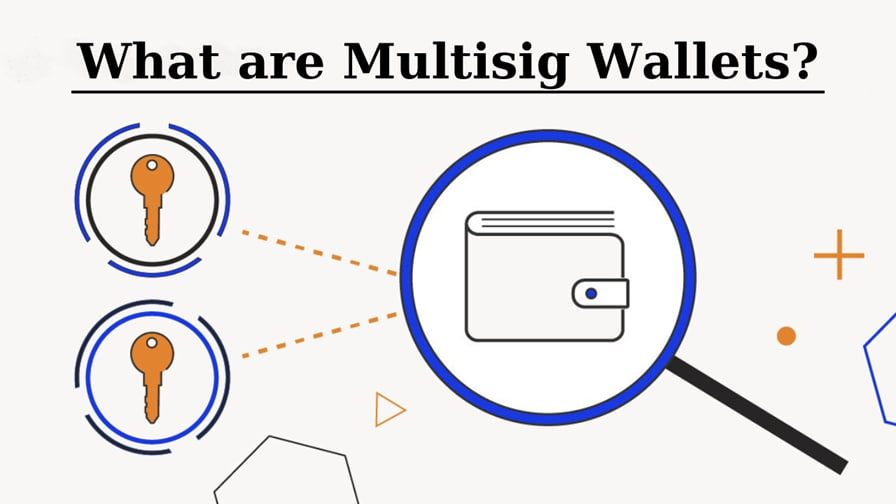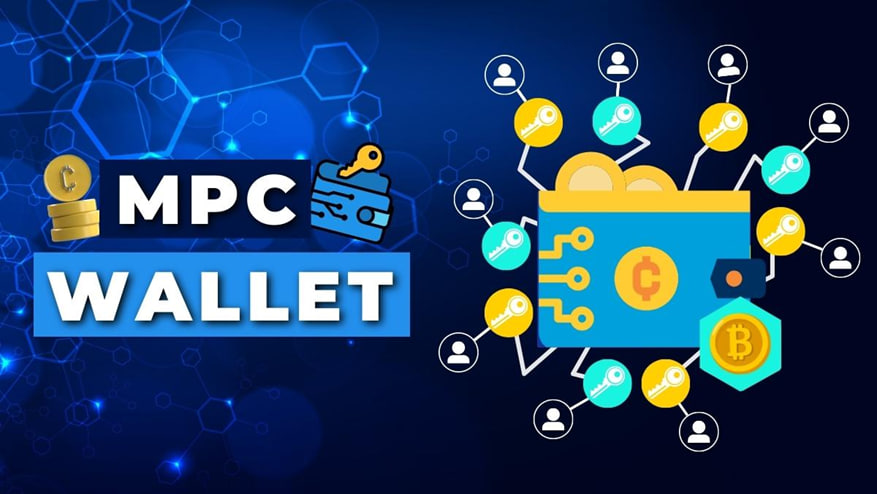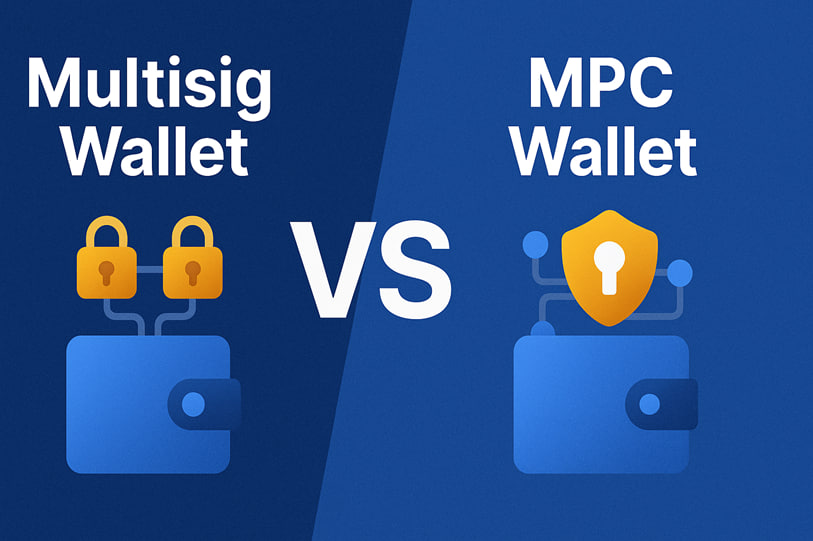Multisig or MPC Wallets: Which Is Safer

Contents
Introduction
The security of cryptocurrency wallets is a significant concern for users. Crypto theft doesn’t just happen through exchange hacks — many cases are caused by weak wallet protection. More and more people are asking the same question: how can you store your tokens in a way that no one can steal them?
Right now, there are two popular protection methods: multisignature (multisig) wallets and wallets based on MPC (Multi-Party Computation) technology. Both options offer enhanced security and provide users with greater control.
In this article, we’ll examine how these wallets operate, their differences, and which one is more reliable.
What Are Multisig Wallets

Multisig stands for “multisignature” — these are wallets that require multiple signatures to approve a transaction. For example, in a 2-of-3 setup, the transaction only goes through if two out of three wallet owners sign it.
This setup allows multiple people or devices to share control. Even if someone loses access to their key, the others can still use the wallet. It’s nearly impossible to steal the funds — a hacker would need several keys, not just one.
Multisig wallets have been used for years in the Bitcoin network. One of the most well-known standards is Bitcoin Multisig. It supports setups such as 2-of-3, 3-of-5, and others.
Advantages of Multisig Wallets:
- Security. Keys are stored separately, which makes it harder for hackers to break in. To access funds, they would need multiple keys — a nearly impossible task.
- Flexibility. You can choose any setup — from simple (2-of-3) to more complex (like 4-of-7). This is helpful for teams, funds, and companies.
- Transparency. The blockchain shows who signed a transaction and when. This makes teamwork easier and avoids confusion.
- Reliability. If one participant loses their key, the others can still sign the transaction and keep access to the funds.
- Direct integration with the blockchain. Multisig works at the network level and doesn’t rely on external services, which reduces the risk of technical issues.
Disadvantages of Multisig Wallets:
- Limited support. Not all blockchains support multisig. Some can’t process these types of transactions, which lowers the method’s flexibility.
- Setup difficulty. Getting everything to work correctly takes some knowledge. A beginner might need expert help to configure a multisig wallet.
- Higher fees. In some networks, multisig transactions occupy more space, which can increase their cost.
- Hard to update. Once a multisig address is created, changing the participants is tricky. You may need to move the funds to a new wallet.
- Limited DeFi functionality. Not all DeFi platforms support multisig wallets, which could limit your access to certain features.
What Are MPC Wallets

An MPC wallet is a method for storing cryptocurrency without ever generating a full private key. Instead, the system splits the key into parts. Each part is kept by a different person or on a different device. No one sees the whole key, not even the wallet owner.
This makes hacking nearly impossible. A thief would need to obtain all the pieces of the key and somehow assemble them, which is extremely difficult.
How Transactions Are Signed in MPC
When someone wants to send tokens, the system starts the signing process. But no one types in the private key. Each person with a piece of the key takes part in the process. The parts work together, but never share their data. In the end, the transaction gets signed, just like with a standard key, but the actual key never appears anywhere.
This makes transactions safe, even if one participant is on an insecure device.
Advantages of MPC Wallets:
- High level of security. The key never exists as a whole, so it can’t be stolen in one piece. Even if one person is at risk, the funds remain safe.
- Ease of use. You don’t need special protocols or network support. MPC works on almost any blockchain, even ones that don’t support multisig.
- Good for teams. Setting up shared access is easy. Each person controls only their part, and the process doesn’t reveal complete key information.
- Support for automation. Some MPC systems let you link the wallet to business tools, making it easier for large teams to manage funds.
- Quick updates. MPC solutions are more easily adaptable to new standards. You can update the wallet setup without moving funds or creating a new address.
Disadvantages of MPC Wallets:
- Complex technology. Understanding how MPC works can be challenging if you are unfamiliar with cryptography. This creates a barrier for beginners.
- Dependence on external tools. MPC often uses third-party software or services. If one fails, access to funds could be affected.
- Less transparency. Unlike multisig, MPC doesn’t show who signed the transaction. That makes it harder to monitor team actions.
- Hard to recover. If someone loses their key part, restoring access can be tough. You might need help from the service that powers the wallet.
- Risk of centralisation. Some MPC wallets rely on one platform. If the developer stops supporting it or changes terms, that could cause problems.
Which One Should You Choose

The right choice depends on who manages the wallet and what you plan to do with it.
If you store crypto on your own, multisig might be too complicated. An MPC wallet could be a better option. You can set it up so one part of the key stays on your primary phone, and the other on a backup device. If you lose one, the funds are still safe. You also avoid the need to manage multiple signers.
MPC also works for teams, especially if your project runs on a blockchain that doesn’t support multisig. But keep in mind — you won’t see who signed what. That can be a downside if your team needs to track member actions.
Multisig is best for group management. It’s an excellent fit for crypto funds, startups, or decentralized projects. Team members agree ahead of time on who will sign transactions. Everything is clear and trackable. You can easily swap members or change the rules. This makes the system safer and more organized.
You should also consider which blockchain you use. Networks like Ethereum and Bitcoin support multisig. Others, such as Solana or Cosmos-based chains, don’t. In those cases, MPC is your only option.
The choice between multisig and MPC depends on your goals, your team’s experience, and the network you use. One doesn’t replace the other. Each fits a different use case.
Conclusion
Both multisig and MPC wallets protect your crypto. Each method has its strengths and weaknesses. Multisig is easier to understand and manage. MPC is more flexible and better suited tos modern needs.
You can’t say one method is always better. It all depends on who uses the wallet, the number of people involved, and the risks you’re willing to accept. The main rule is this: don’t keep all keys in one place, and don’t leave your security to chance. Safety starts with the right choice.